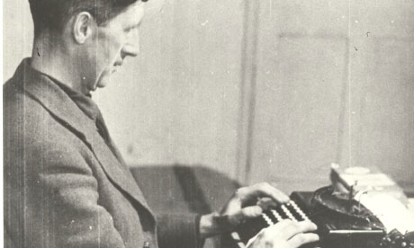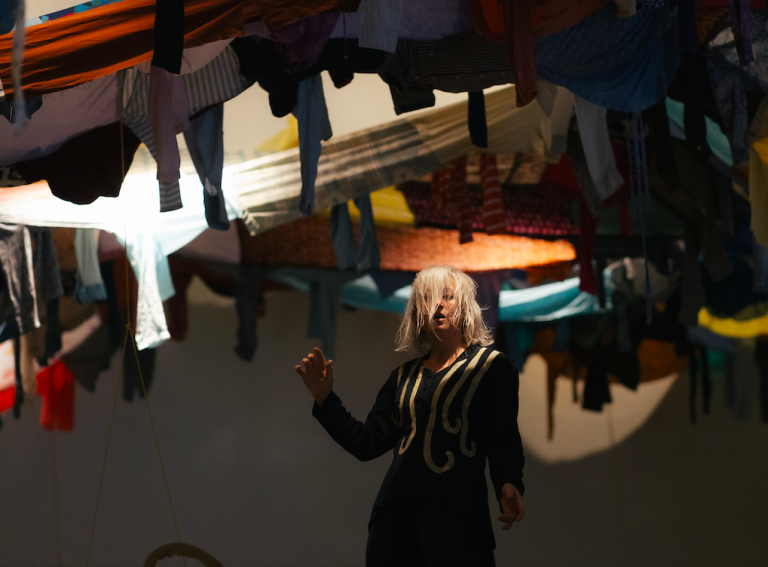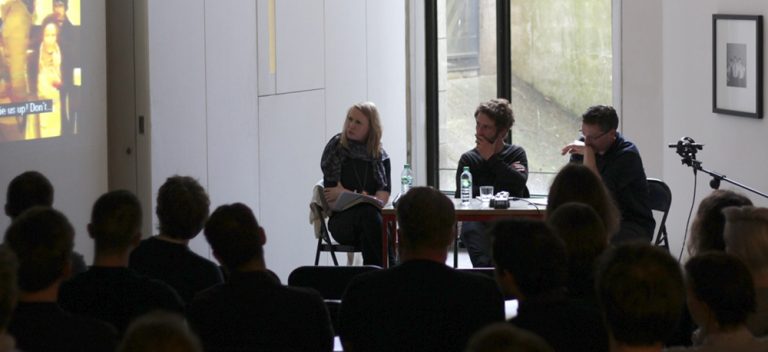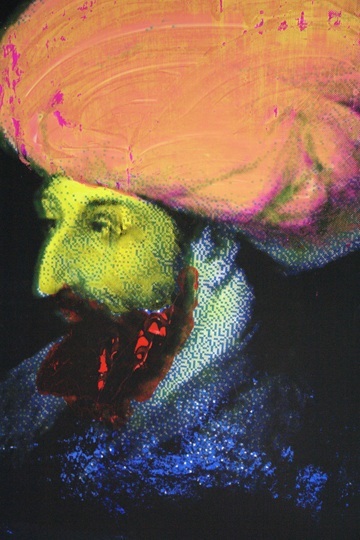In this year’s March edition of Texte zur Kunst they printed the contributions from their “Where do you stand, colleague?” seminar of December 2010. It was an international symposium set up to address “the fundamental question of the relationship between art criticism and social critique.”[1] The symposium celebrated twenty years of TZK, and there were contributions from such heavyweights as Luc Boltanski, Diedrich Diedrichson, Isabelle Graw (editor of TZK), etc. Some of the ideas presented in this issue were difficult but made accessible by the writing, some ideas were potentially more accessible but made difficult to access by the writing. It is the latter that is a problem, and further, within art writing discourse, poor writing which relays potentially simple ideas as difficult is being presented as being on an equal footing to clear writing about difficult or complex ideas. Benjamin Buchloch’s contribution, for instance, elucidates the difficult in language that was mostly cogent and clear. Yet alongside Buchloch’s piece is one that is virtually incomprehensible. The artist Andrea Fraser, writes:
Increasingly, I see art discourse, like art itself, as dominated by a set of strategies that are inseparably social, psychological and artistic or intellectual and that the aim to maintain a steady distance between art’s symbolic systems and it’s [sic] material conditions, be these economic in the political or psychological sense, located in a social or corporal body; that serves to isolate the manifest interests of art from the immediate, intimate and consequent interests that motivate participation in the field, organize investments of energy and resources, and that are linked to specific benefits and satisfactions, as well as to the constant specter of loss, privation, frustration, guilt, shame, and their attendant anxiety.[2]
It might seem unfair to extract this sentence out of the context of the printed contribution, and it is necessary to say that this was originally a prepared speech, for a ‘public’ seminar. These issues aside, the fault lies with TZK publishing this sentence in this form. Someone on the editorial team of TZK should have asked, or should have been given the time to ask, what does this sentence mean? None of the meanings in this warren-like sentence can contribute in any meaningful way to what Fraser’s argument might be, and in turn elucidate what she might stand for.
If we look at the first sentence segment:
Increasingly, I see art discourse, like art itself, as dominated by a set of strategies that are inseparably social, psychological and artistic or intellectual …
From this we are being told that art discourse and art itself are separate, but similar in that they are dominated by a set of strategies that are social, psychological and artistic or intellectual. In what way are they dominated? And how are these disparate strategic practices inseparable? Are they inseparable in their dominance of art and art discourse or inseparable outside of this situation of dominance, or both? Does social mean here, external to art discourse, or inclusive of? At what level are we talking about psychological? Social psychology or personal? Does the grouping of the artistic strategies and intellectual strategies at the end of this sentence segment – by using the conjunction “or” – suggest that the artistic and intellectual are somehow inherent in each other? Is this inherence all pervading and if not, to what degree? Also what are intellectual strategies? What kind of intellectual strategies is Fraser relating to? Etc. At the end of this sentence segment, I am in no position to enter the next segment, never mind apprehending the sentence as a whole.
The microcosm of this sentence gives a sense of the macrocosm of the argument, or position that Fraser doesn’t deliver. But it doesn’t matter.[3] These are just another collection of words which in this art-writing context are allowed to operate outside of any use other than to be things that appear on a printed page and bound with others pages with words on them too, and this bound object says: look at and feel the amount of text that has gone into this event and thus the rigour with which it has been covered, and by extension how important it is …
The problem with TZK publishing writing like this is that some people will read it – people in the business of art theory, the visual arts in general, and most damagingly, students. TZK is viewed as being at or near the peak of European art critique and art writing in general, so, if a student from an undergraduate or postgraduate visual art degree reads something like this, the fact that it is impenetrable somehow gives it merit. Such merit that the style, obfuscation, and jargon that is used, is mimicked, and this mimesis in art-writing goes unchecked until it becomes normalised. In Ireland (and the UK) when studying for a visual arts undergraduate degree, the amount of original writing created by a student (i.e. formal assignments) is small, perhaps twenty-five thousand to thirty thousand words over four years. Contact from the lecturers with the students in relation to their writing specifically is also very small (there are any number of reasons for this, some of which we hope to cover in Paper – Dublin Edition 2), as such the students are left to their own devices as to how they are educated in art-writing, and by extension how they begin to write about art. Places like Sternberg Press, Texte Zur Kunst, October, Afterall, etc, become the educators – and these are the good ones. For the most part, in publications like these the writing is informative, if a little flabby, often pretentious, sometimes entertaining, but almost never activating. The writing is too dulled with jargon, too over-designed, too couched and too insulated for the meanings of the words, potentially dangerous words, to reach their edge, the edge from where the potentially activated reader could take them, onward into the readers’ practices, and into the world.
This idea of activation is want I unpack in relation to art-writing in Ireland. There appears to have been, in the last number of years (since 2008 at least) a call for the visual arts to engage more critically with itself and with the political situation in post-boom Ireland. I will focus on the former and by extension, with the analysis and method I propose, the latter will be broached.
In terms of having an effect, all that is important in writing critically about the visual arts in Ireland today is whether that person is influential or not. Reviews by the broadsheet press are generally dismissed as crude overviews, written for the non-specialised but interested masses. However, for the professional artist, art writer, or art educator this form of reviewing is insufficiently specialised and by crude extension insufficiently critical. Insufficiently specialised often means that there is not enough reference being made to current critical and art theory practices/fashionable philosophical ideas, current and past. These places of reference produce jargon which at times is utterly necessary for talking about a specific subject, but more often is mis-used, mis-interpretated, or used not for the clear futherance of an argument, but for the appearance of furtherance of an argument. It is this verisimiltude of argument that is a problem in ‘specialised’ contemporary art writing in Ireland. Although this is a reductive way of apprehending the subject, there is some use in pointing out that within this verisimiltude there lies at least three major faults:
1. Cliché
2. Flab (mis/over-used jargon or normalised jargon and thus further cliché)
3. Legitimation of argument and ideas using theory/philosophy
In relation to point three, argument is based on persuasion, not legitimation based upon the arguments of others, no matter how high profile or how well received or embedded in discourse the philosophical theory being referenced may be. This meek practice has at least two other negative effects, both public: it alienates the reader, and, it creates a specious currency within the economy of reputation – an economy that is one of the cornerstones of the current visual art market. The result of which is that appearance is mistaken for and lauded as the fulfillment of an argument that has only been vaguely gestured at. Of course critical theory and philosophical thought has an important place in art-writing, but the ideas from these fields should be allowed to settle and infuse in the mind of the writer, a writer who has read, understood, and judged the relevance of the ideas at stake.
Point two is an extension from the core of one. Both stem from uncritical reading of writing. Critical reading is done by an activated reader, not a reader seeking only to be entertained. A reader is activated when the words on the page are being brought to the edge of their meaning and the reader must then imagine these words forth into their own selves. Cliché and jargon are the great insulators from this interaction. They are abound in current art-writing and masquerade as “voice”. As such art-writing that is viewed as being critical is merely comprised of giant husks of cliché and jargon noisely barked, cautiously nudged, or urbanely sneered toward the thing, or person being critiqued/humiliated. This form of criticism is a monochromatic misuse of the potential of writing. It fills pages, and creates brief and hollow sensation.
Real critical response happens long before the writing is published. I believe it happens within the interaction between the writer and another, let’s say this other is an editor. The editor can suggest changes, make elisions, remove cliché, lessen jargon, and question the motives and modes of a piece of writing in a way that the writer never could.[4] If these suggestions are (hesitantly) accepted by the writer, a space is cleared within the text. This space is where the activated writer will extend into, to think through and mine the issue already evoked by their piece, thus making it richer, more concise, more complex, and more active. A relationship develops and writing that is activated can emerge for a reader who will in turn be activated, ready, aware, politicised.
*
The Dublin Review, a literary journal, has published over the last ten years some of the best personal and journalistic essays in Ireland. It has been edited throughout this time by Brendan Barrington (also of Penguin Ireland). I will pick from it a recent essay written by Brian Dillon on the artist Gerard Byrne.[5] The essay, which was published in 2010, is titled “Future Anterior”, and it charts Dillon’s interaction with Byrne’s work since about 2007 where he first viewed Byrne’s A Country Road. A Tree. Evening. Dillon’s essay brings Byrne’s work and ideas from what could be argued as an art-writing setting to a literary setting. The editorial interaction here happens between Barrington and Dillon. It is a very successful partnership, having previously produced Tormented Hope: Nine Hypochondriac Lives and In the Dark Room, both non-fiction, and published by Penguin Ireland. In this essay, from The Dublin Review, there were a number of sentences that stood out. Here is one:
In part, these are the typical cultural coordinates and awakenings of anybody of Byrne’s age in Ireland at the time, but what he seems to have taken from his early visual education – as also from Beckett and Brecht, from a belated acquaintance with Peter Lennon’s documentary ‘Rocky Road to Dublin’ or from the alienation effect of overdubbed Sinn Féin voices on 1980s television – is a sense of involution of history and performance, the way facts become spectacle and the way history insinuates its way into our most fantastical dreams of what we might become. [6]
Again it may seem reductive and unfair to extract one sentence out of the context of the whole piece in question. But if we were to compare this relatively long sentence from The Dublin Review with the one from Texte zur Kunst above, we can make one major conclusion – that despite the lack of context, this sentence is at least apprehended, and at most potentially activating.
The sentence has clear information, i.e. that there are, according to Dillon, a number of specific cultural instances that he sees as having an influence on Byrne’s work. Dillon could have said that the influences on the young Byrne’s visual education were: literary, theatrical, filmic, and socio-political. And this, though not wrong, is less rich, less specific, less suggestive, and certainly less activating for the reader.
There are layers that are allowed to exist in this sentence, without the basic meaning of the sentence being abandoned. This basic understanding of the sentence offers a platform from where the reader can push off and extend into the extra layers that the words offer. By simply looking critically at the verbs in this sentence, we are offered a number of sympathetically alternative and additive layers of meaning, for example:
… but what he seems to have taken from his early visual education ... ‘taken from’ suggests Byrne, even at a young age was aware and judicious, and that these formative influences still have an effect on his art making now, which also suggests that Dillon considers Byrne’s work as having a groundedness and authenticity to it (whether these are important qualities to have is beside the point).
… the way facts become spectacle … ‘facts become’ at once accosts and brings into focus the reader’s understanding of ‘facts’ as being something solid and inarguable, not something in flux or ‘becoming’ from one thing to another. This verb also brings to the reader’s mind the historical process of: happening, description, report, documentation, verification, storage, recollection, etc. “Become” is an extremely rich verb in this context and furthermore it doesn’t need an adverb or any other attendant word (cliché/jargon) to suffocate its effect, the effect of extension and activation on the reader.
… the way history insinuates its way … ‘history insinuates’ somehow makes ‘history’ human, fluid, unstable, or not to be trusted. This second verb in this sentence segment somehow adds colour to the fluidity evoked by Dillon’s proposal that ‘facts become.’ Not only are we being given a description of what Dillon proposes as being influences on Byrne’s work, but we are being given a bare and dangerous insight into what Dillon himself thinks of the disorganisation and perforation of the historical process. By extension we become aware with this verb that this process has an unsettling effect on him, and by extension a similarly unsettling effect on society in general.
… fantastical dreams of what we might become. “what we might become” has a dramatic effect which leaves the reader with an open-ended situation to imagine into, and, it is mimetic of Byrne’s work. Using the verb ‘become’ twice in the sentence creates a sort of rhythm that is then brought to a halt. These words have meaning and effect, where one doesn’t negate or take precedence over the other – put another way, these words let each other breath. And there are countless other eddies of complexity that can be summoned from this sentence – complexity that stems from and is delicately placed upon simplicity and cogency – without undermining it.
This place of rigorous and creative editorial interaction that helps produce texts, and sentences like Brian Dillon’s above, does not exist in any art-writing context in Ireland. But it is the site where meaningful critical art-writing and reading can emerge. This editorial process is unglamorous, and there is little or no recognition of this shared practice in the visual arts. It is slow. But it is an alternative that should be considered. If this process is taken seriously and given time to develop, reviews, essays, and articles on the visual arts will start to emerge that are not only accessible, informative, and complex, but also full of dangerous sentences that are allowed to ping and awaken.
*This essay was first published last November in PVA‘s hardcopy Dublin edition.
_________________________________________________
[1] Texte Zur Kunst, March 2011, p 122.
[2] Ibid, p 155.
[3] This in itself is not a new problem. Anyone who has read George Orwell’s essay “Politics and the English Language” will see similar concerns being aired, it having been written almost seventy years ago.
[4] Greg Baxter, the essayist and novelist, has written on this issue in Paper Visual Art online and Paper’s hard copy Cork Edition – A brief note on the editing process.
[5] The reason I pick Dillon is because he is a writer that operates in both art-writing and literary settings.
[6] Dillon, Brian. Future Anterior. Dublin Review, issue 38. 2010, pp 27. There is also, in this issue, an excellent journalistic essay on Ireland’s ‘looming water crisis’ by Colin Murphy. This can now be accessed on the DR website: www.thedublinreview.com.




